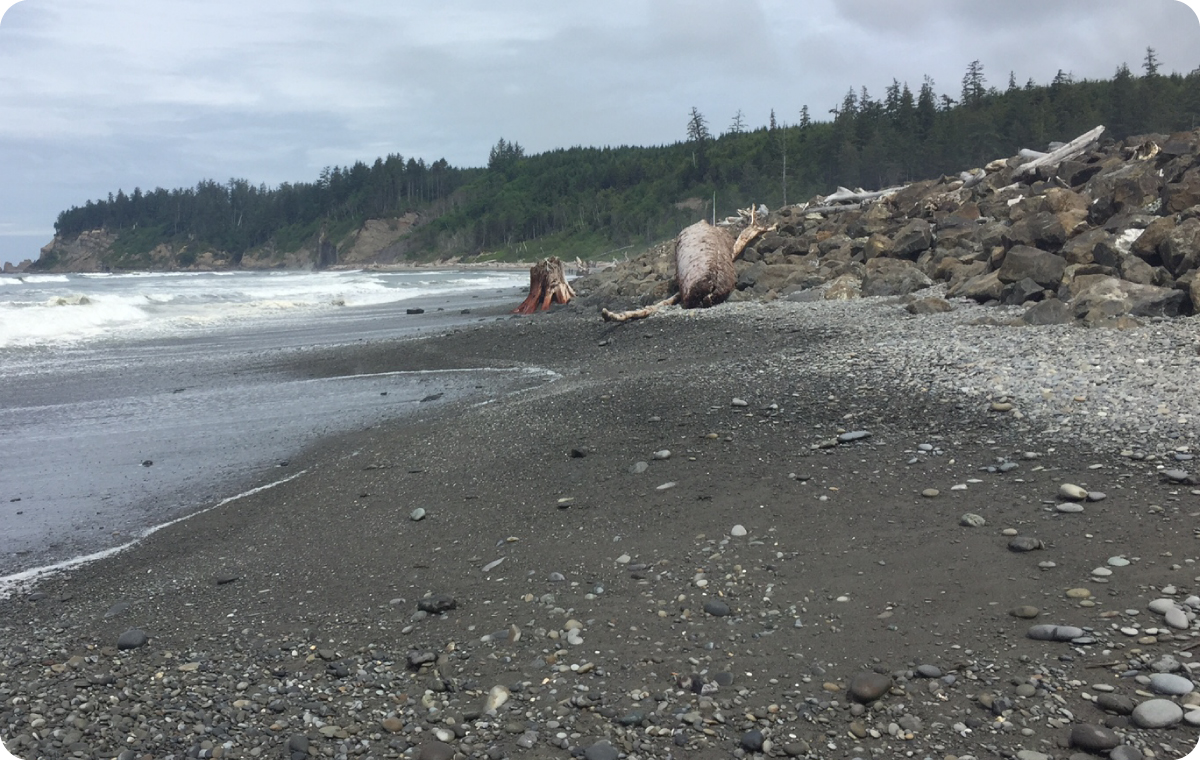Resiliency Planning for the Quinault Indian Nation
In recent years, the Quinault Indian Nation on Washington's Olympic Peninsula has dealt with repeated coastal flooding and erosion impacting its shoreline, as well as landslides and glacial retreat affecting the tribe's water supply. As it prepares to move two of its villages to safer, more climate-resilient locations, the tribe has asked for help incorporating resilient energy systems into its community planning.

After two seawall breaches and associated disaster declarations, the Quinault Indian Nation partnered with NREL and DOE to incorporate resilience into its recovery efforts. Photo by Eliza Hotchkiss, NREL
In June 2016, NREL Resilience Lead Eliza Hotchkiss and Engineer Sherry Stout led a two-day strategic resilient energy workshop for the Quinault Indian Nation to define how a resilient community might look and develop a strategic energy plan.
After the workshop, the team performed a high-level renewable energy assessment, providing technical information on energy efficiency and renewable energy options, and modeling building plans to make recommendations for increasing resiliency in the long term. Read more in this U.S. Department of Energy (DOE) blog post by Hotchkiss.
Share
